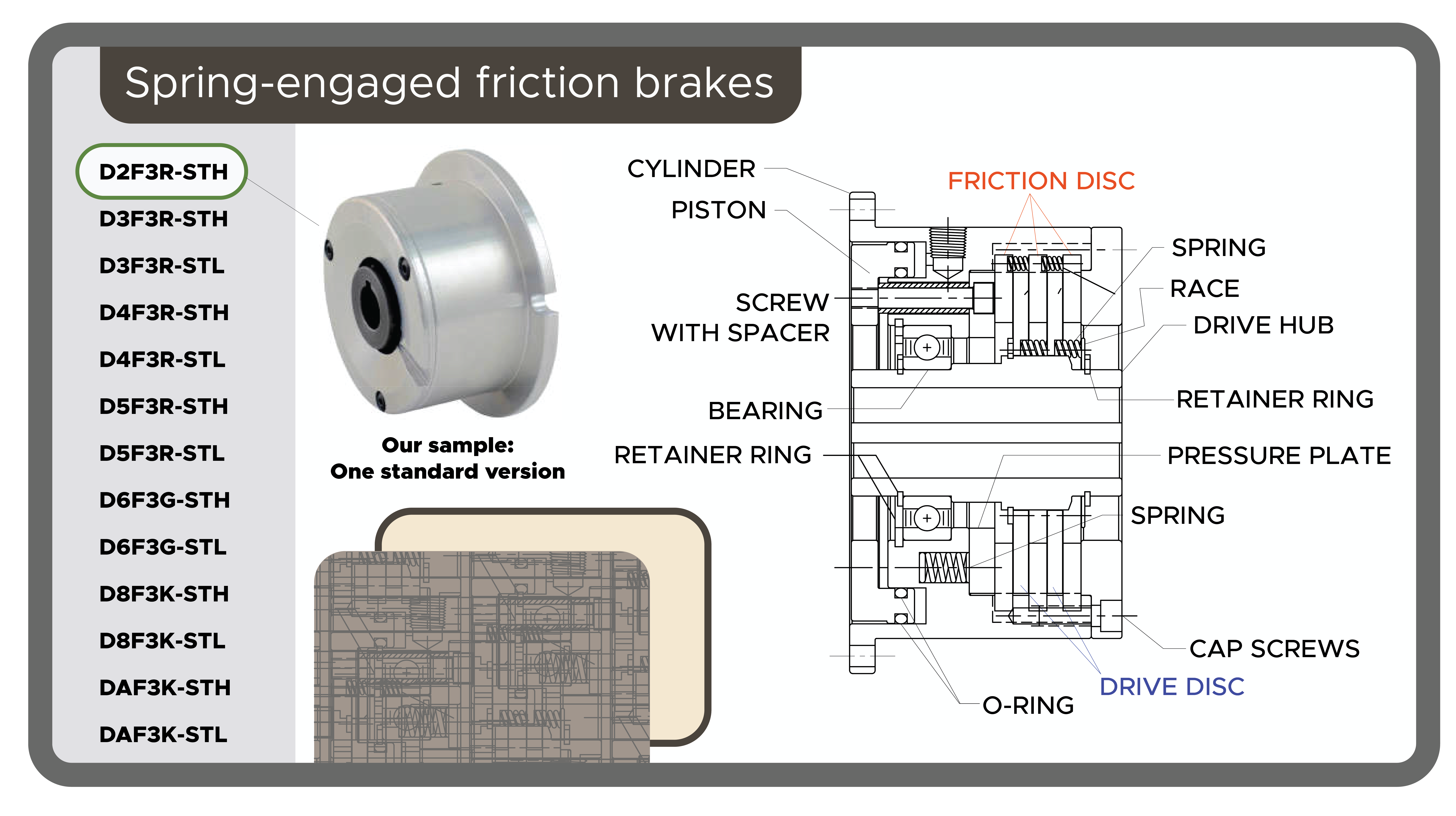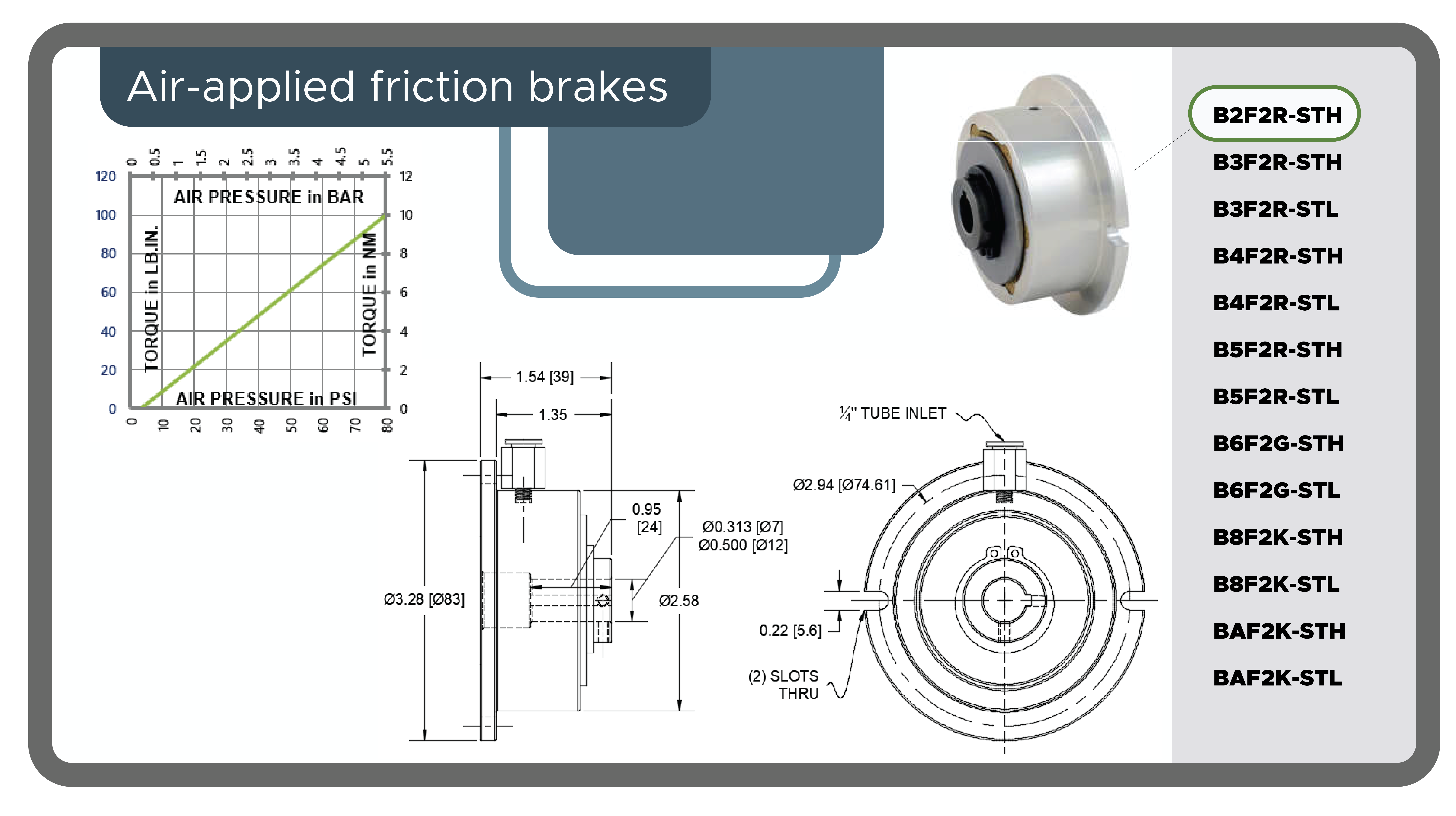In a recent video with Lee Teschler, we got the chance to handle two brakes from Mach III. Watch the video:
Our first sample — a D2F3R-STH spring-engaged brake — is one of more than a dozen standard variations … with many more customizable options.


This modular brake design has subcomponents grouped into kits — for drive-hub elements, drive-disc elements, piston elements, cylinder elements, and a final kit that includes two O-rings, 24 coil springs, and three friction discs. It’s recommended that end users keep these common wear items on hand for very critical applications where downtime must be minimized.

Torque is to 91 lb-in. and maximum speed is to 1,750 rpm. As with most all brakes, the manufacturer recommends a service factor of 1.5 to 2 when calculating required torque. Brakes shouldn’t be used at maximum rated torque for continuous duty.
So that was a spring-engaged brake … the other sample we show in the video is an air-engaged brake — the Mach III B2F2R-STH. Dynamic torque for this flange-mounted brake at 80 psi input is 100 lb-in.
Of course, torque capacity is only one factor to consider when selecting a brake. Mach III recommends that design engineers contact the engineering department for application review and assistance.

The pneumatic supply must include a flexible airline and correct fitting for the brake inlet’s NPT size — and fixing with a thread-sealing compound. Air supply should be both filtered and regulated. For more information, visit machiii.com.
Filed Under: Motion Control Tips






Tell Us What You Think!